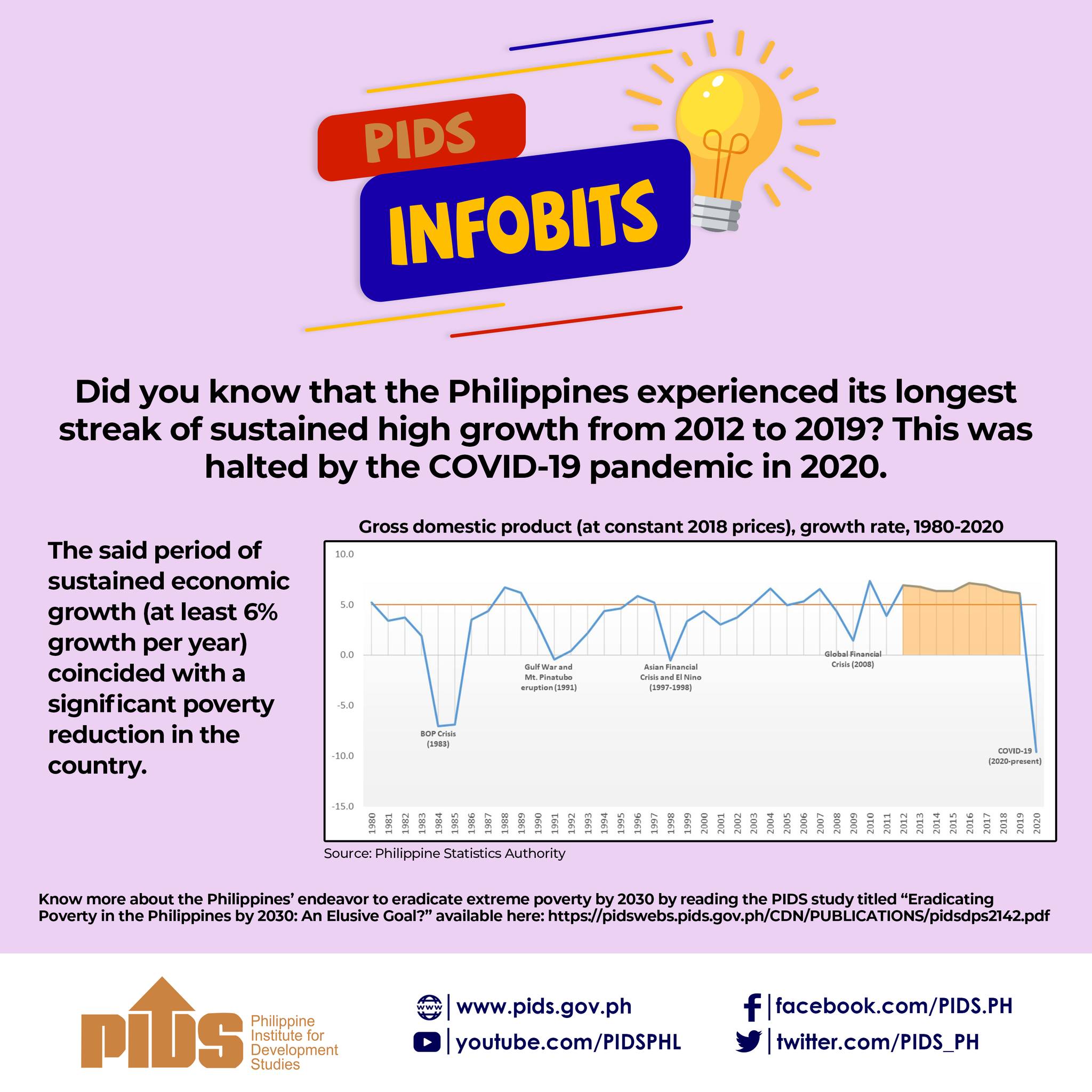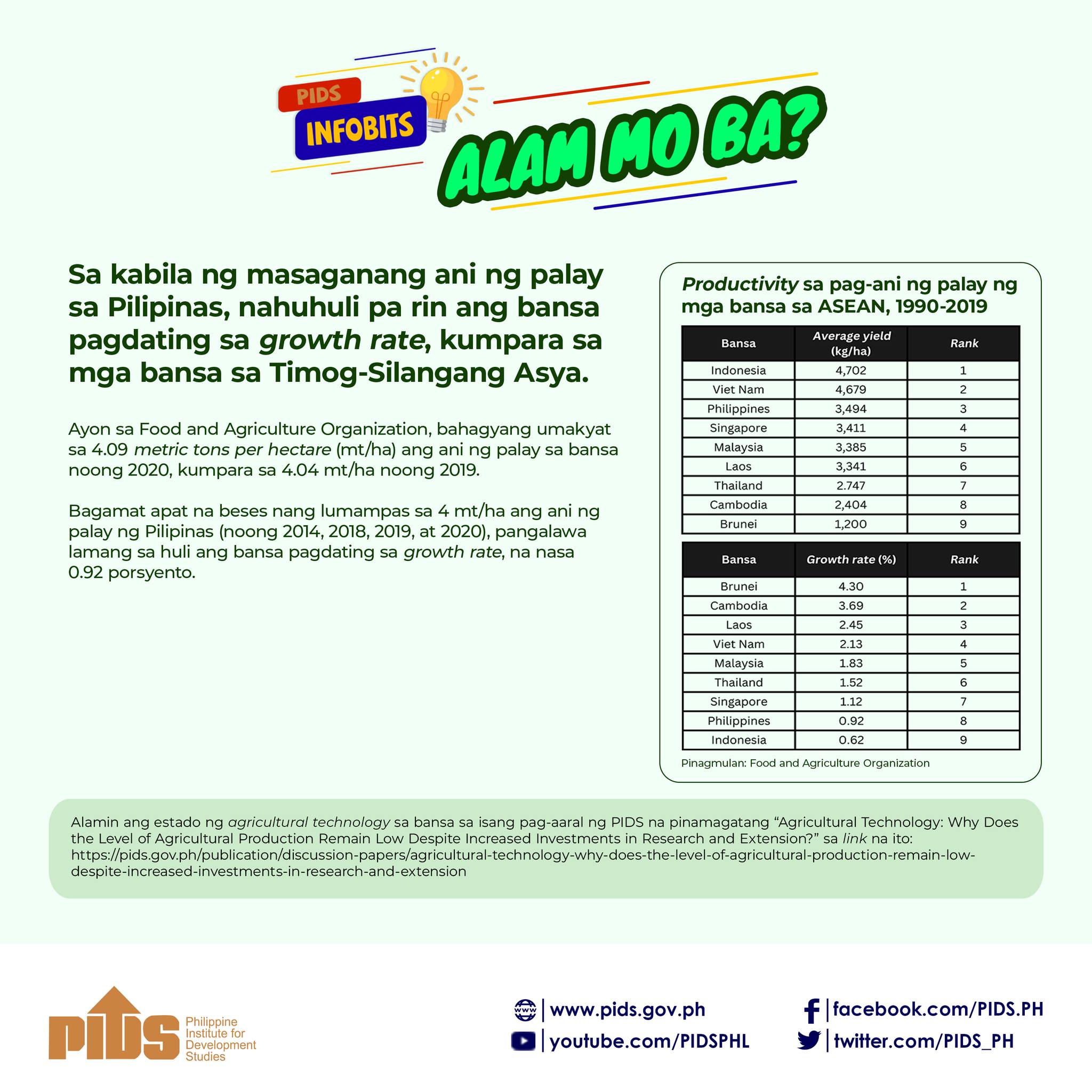The Philippine Institute for Development Studies (PIDS) has significantly cut its growth forecast for the economy to a range of 5.7 percent to 6 percent in 2015. Worse, the state think tank said the May elections could drag further the country’s growth this year.
Initially, the PIDS forecast a full-year growth of 6.8 percent in its May 2015 announcement. But with the weaker-than-expected growth in the first semester and the impact of El Niño, the economy is now forecast to register even slower growth.
The official full-year GDP data will be released by the Philippine Statistics Authority on Thursday.
“The current Philippine leadership must fully utilize its remaining political capital to pursue difficult reforms covering trade facilitation and regulatory frameworks. It must continue to invest in both human and physical capital that will raise productivity in the future,” Pids President Gilbert M. Llanto said. Llanto added that these investments will be crucial, especially in 2016, when the country is faced with major headwinds.
He said the Philippines’s integration with its Asean neighbors, as well as the political uncertainty from the coming elections, may cut the country’s economic growth this year. Llanto said the slowdown in the economies of the Asean’s trading partners could spill over to the Philippine economy this year.
“China’s slowing growth and recession in Japan do not bode well for the economy. Weaknesses among Asean’s major trading partners will also have negative spillover effects on Asean member-states like the Philippines,” Llanto added.
The negative spillover effects of the slowdown in China and Japan, which are also among the Philippines’s major trading partners, may slowdown the country’s trade performance this year.
This is a concern, given that exports and imports growth have since been hampered by the country’s critical development constraints, such as poor infrastructure and connectivity. Llanto said the trade sector is also burdened with inefficient procurement processes and red tape. These are the same factors that affect the country’s overall business climate.
While the current administration has put in place counter measures, Llanto said these are still insufficient, and President Aquino has less than six months before his term expires. Llanto added that this is the reason the political uncertainty caused by the presidential elections in May may also drag the economy this year.
The PIDS president said there is a risk that the coming elections will again see personality politics at work. This poses a danger on the kind of leadership the country will have in the next six years. “There will not be a lack of contenders in the political market who might put political expediency over difficult reform. This poses a danger to the economy because Philippine politics is already personalist and opportunistic. Many voters don’t vote on issues, but are mesmerized by personal charisma and [empty] promises made by political entrepreneurs,” he added.
The PIDS is not the first institution to cut its growth forecast for 2015 and 2016. The latest one was the United Nations Economic and Social Commission for Asia and the Pacific (Unescap).
In its Economic and Social Survey of Asia and the Pacific 2015: Year-End Update, Unescap cut its growth forecast for the Philippines to 6.3 percent for 2016, from the initial estimate of 6.4 percent it made prior to December 2015.
The lackluster public spending in 2015, Unescap added, likely caused Philippine GDP growth to slow to 5.9 percent last year compared to the UN agency’s previous estimate of 6.5 percent.//
Initially, the PIDS forecast a full-year growth of 6.8 percent in its May 2015 announcement. But with the weaker-than-expected growth in the first semester and the impact of El Niño, the economy is now forecast to register even slower growth.
The official full-year GDP data will be released by the Philippine Statistics Authority on Thursday.
“The current Philippine leadership must fully utilize its remaining political capital to pursue difficult reforms covering trade facilitation and regulatory frameworks. It must continue to invest in both human and physical capital that will raise productivity in the future,” Pids President Gilbert M. Llanto said. Llanto added that these investments will be crucial, especially in 2016, when the country is faced with major headwinds.
He said the Philippines’s integration with its Asean neighbors, as well as the political uncertainty from the coming elections, may cut the country’s economic growth this year. Llanto said the slowdown in the economies of the Asean’s trading partners could spill over to the Philippine economy this year.
“China’s slowing growth and recession in Japan do not bode well for the economy. Weaknesses among Asean’s major trading partners will also have negative spillover effects on Asean member-states like the Philippines,” Llanto added.
The negative spillover effects of the slowdown in China and Japan, which are also among the Philippines’s major trading partners, may slowdown the country’s trade performance this year.
This is a concern, given that exports and imports growth have since been hampered by the country’s critical development constraints, such as poor infrastructure and connectivity. Llanto said the trade sector is also burdened with inefficient procurement processes and red tape. These are the same factors that affect the country’s overall business climate.
While the current administration has put in place counter measures, Llanto said these are still insufficient, and President Aquino has less than six months before his term expires. Llanto added that this is the reason the political uncertainty caused by the presidential elections in May may also drag the economy this year.
The PIDS president said there is a risk that the coming elections will again see personality politics at work. This poses a danger on the kind of leadership the country will have in the next six years. “There will not be a lack of contenders in the political market who might put political expediency over difficult reform. This poses a danger to the economy because Philippine politics is already personalist and opportunistic. Many voters don’t vote on issues, but are mesmerized by personal charisma and [empty] promises made by political entrepreneurs,” he added.
The PIDS is not the first institution to cut its growth forecast for 2015 and 2016. The latest one was the United Nations Economic and Social Commission for Asia and the Pacific (Unescap).
In its Economic and Social Survey of Asia and the Pacific 2015: Year-End Update, Unescap cut its growth forecast for the Philippines to 6.3 percent for 2016, from the initial estimate of 6.4 percent it made prior to December 2015.
The lackluster public spending in 2015, Unescap added, likely caused Philippine GDP growth to slow to 5.9 percent last year compared to the UN agency’s previous estimate of 6.5 percent.//












